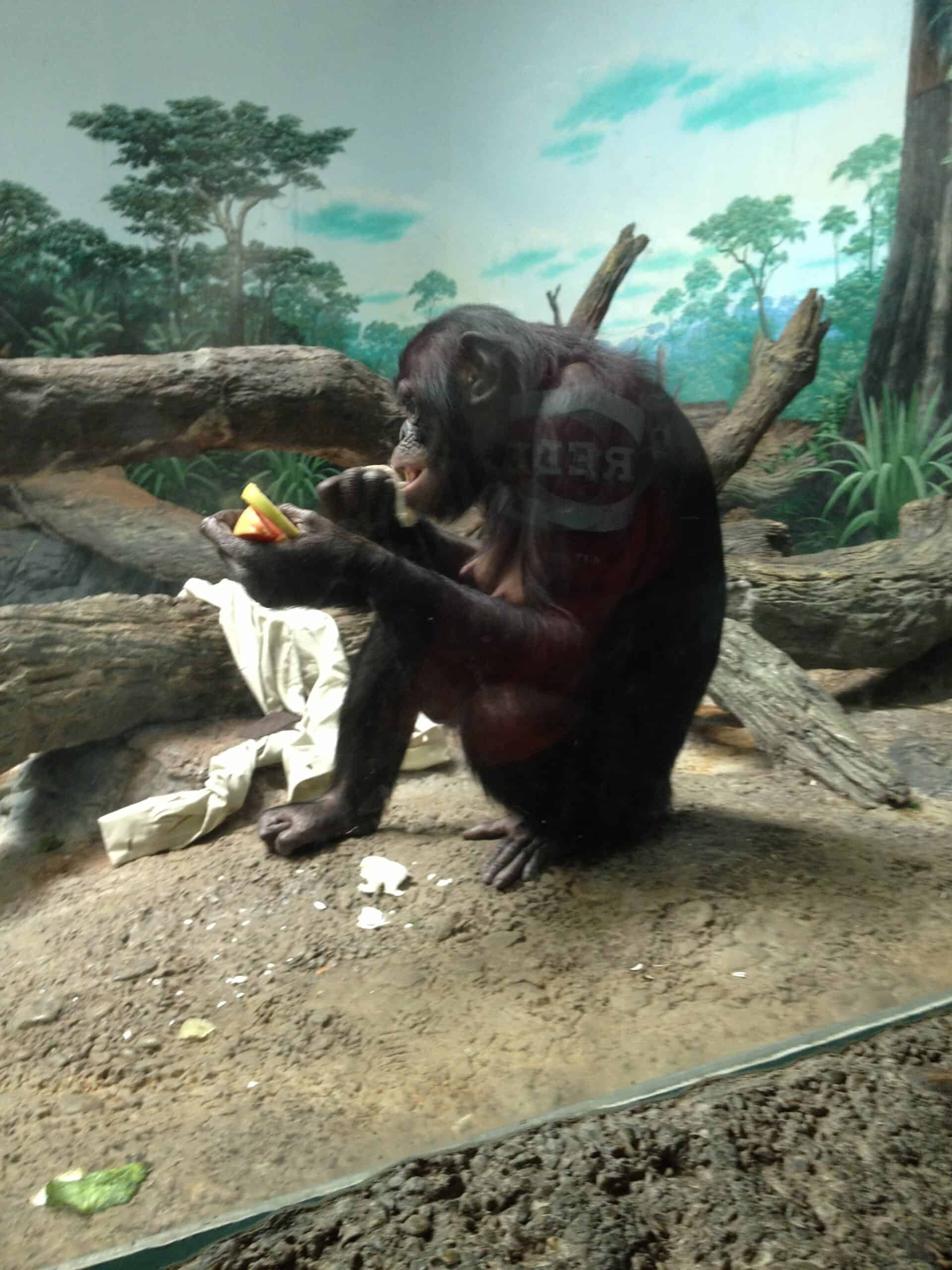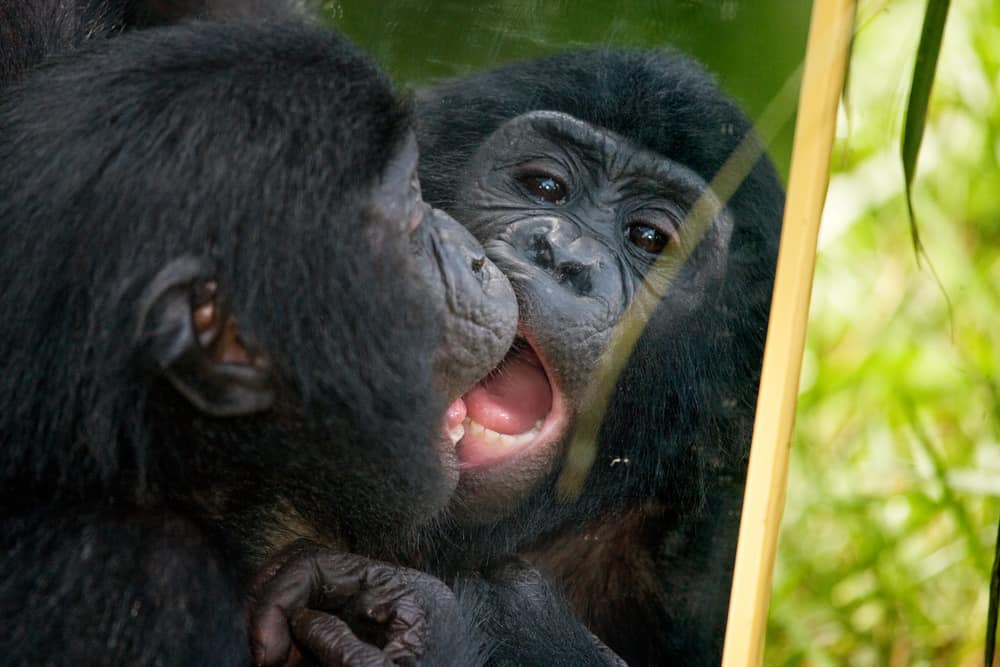Have you ever wondered what goes on in the minds of other animals? Imagine peering into a mirror and suddenly realizing the face staring back is your own. For most creatures on Earth, this moment never happens. But for a select few, the mirror test reveals a shocking level of self-awareness that challenges everything we thought we knew about animal intelligence. Some of these animals might surprise you, and their stories are as heartwarming as they are astonishing. Dive in and discover the remarkable species that see themselves as individuals, just like we do.
15 African elephants

African elephants stand out as emotional giants, not just in size but in intellect. When placed in front of a mirror, these majestic animals have been observed exploring their own faces, trunks, and even inspecting marks placed on their bodies that they could only see in the reflection. This behavior is moving—elephants show curiosity and a sense of self that’s hard to deny. Their mirror recognition skills suggest deep cognitive abilities, possibly linked to their intense social bonds and ability to mourn their dead. Elephants have even been seen comforting each other, which fits with the empathy needed for self-recognition. This ability to recognize themselves is a testament to their complex inner lives, making them one of the most fascinating animals on this list.
14 Bottlenose dolphins

Bottlenose dolphins are the acrobats of the ocean, known for their playful leaps and intricate social lives. But their intelligence goes far beyond tricks. Dolphins have passed the mirror test with flying colors, often using mirrors to examine parts of their bodies they can’t normally see. Their reactions include twisting and turning, watching themselves with obvious interest. What’s particularly inspiring is how young dolphins learn about mirrors from older ones, a hint at cultural learning. Dolphins’ recognition of themselves in mirrors is a window into the rich mental world beneath those smiling faces. Their sense of self is just one more reason people are captivated by these enchanting creatures.
13 Chimpanzees

Chimpanzees, our closest living relatives, have set the gold standard for animal self-awareness. Studies show that chimps will use mirrors to inspect marks on their faces, groom themselves, and even make funny faces. This behavior is both hilarious and touching, as it highlights their curiosity and playfulness. Chimpanzees often show surprise or amusement when first encountering their own reflection, but quickly learn that it’s themselves staring back. Their ability to recognize themselves demonstrates not just intelligence, but a sense of individuality. This trait brings us closer to understanding the emotional and cognitive worlds of these remarkable primates.
12 Orangutans

Orangutans, with their soulful eyes and gentle manner, are another ape species that ace the mirror test. These red-haired thinkers have been observed using mirrors to look at hard-to-see parts of their bodies, just like humans might check for spinach in their teeth. What’s truly endearing is how orangutans seem captivated by their reflections, sometimes spending long moments exploring every detail. Their self-recognition is a powerful reminder of the deep cognitive abilities hidden in the rainforests. Orangutans’ intelligence is especially poignant given the threats they face—and their capacity for self-awareness makes their conservation all the more urgent.
11 Eurasian magpies

It’s hard to believe, but some birds are as self-aware as many mammals. The Eurasian magpie, with its bold black-and-white plumage, shocked scientists by passing the mirror test. Magpies have been seen using mirrors to remove colored stickers placed on their feathers, proving they understand the reflection is their own. This discovery flips our ideas about bird brains on their head—magpies have brains the size of a walnut, yet show intelligence that rivals primates. Their mirror antics are both surprising and delightful, reminding us that intelligence comes in all shapes and sizes.
10 Asian elephants

Much like their African cousins, Asian elephants have displayed a touching ability to recognize themselves in mirrors. These gentle giants were seen using their trunks to touch marks on their heads only visible in the mirror, a clear sign of self-awareness. Asian elephants live in tight-knit family groups, and their mirror test success may be linked to their need for strong social connections. Observing these elephants interact with their own reflections is both moving and humbling—it gives us a glimpse into the world of an animal that feels, thinks, and understands itself in ways we’re only beginning to appreciate.
9 Orcas

Orcas, also known as killer whales, are famous for their dramatic black-and-white coloring and complex family groups. But beneath the waves, orcas are thinkers, too. Researchers have observed orcas responding to their reflections with behaviors suggesting self-awareness—twisting, turning, and inspecting their bodies. These massive predators use their intelligence for hunting, socializing, and, it seems, self-exploration. Orcas’ potential for self-recognition is inspiring, showing that even the wildest creatures of the ocean might share a sense of self with us.
8 European magpies

The European magpie’s reputation for cleverness is well-deserved. Like their Eurasian cousins, these birds have passed mirror tests, removing colored tags from their feathers after spotting them in their reflections. Their actions are not random; they clearly understand that the image in the mirror is themselves. Watching a magpie investigate its own reflection is a joyful experience—it’s almost as if they’re admiring their own beauty or double-checking their style. This delightful behavior adds another feather to the cap of bird intelligence.
7 Common dolphins

Common dolphins are quick, social, and endlessly curious. In aquarium settings, these dolphins have been seen playing with mirrors, examining themselves, and performing behaviors that show they know the reflection is their own. Their interest in mirrors seems to go beyond simple curiosity—they appear to enjoy interacting with their own images, sometimes in playful or even silly ways. This self-awareness is a strong indicator of their impressive intelligence, and it adds to the reasons why dolphins capture our hearts.
6 Bonobos

Bonobos, sometimes called the “gentler cousins” of chimpanzees, also demonstrate self-recognition in mirrors. These peaceful apes use mirrors to investigate their faces and bodies, showing a playful fascination with their reflections. Bonobos are known for their empathy and complex social relationships, and their ability to recognize themselves suggests a rich inner life. Observing bonobos with mirrors reveals a side of their intelligence that is both touching and thought-provoking—reminding us just how close these animals are to us.
5 Rhesus macaques

Rhesus macaques were long thought to fail the mirror test, but recent studies have turned that idea upside down. With a little training, some macaques learn to use mirrors to check out marks on their faces, hinting at a hidden capacity for self-awareness. The journey these monkeys take—from ignoring their reflections to understanding them—is remarkable. It suggests that self-recognition might be more common, or at least more possible, in the animal kingdom than we once believed. Their story is one of growth, learning, and the surprising twists of animal intelligence.
4 Cleaner wrasse

Few would expect a tiny reef fish to pass the mirror test, but the cleaner wrasse has done just that. When scientists placed colored marks on these fish, they used the mirror to try to remove the marks from their own bodies. This behavior is astonishing in such a small-brained animal and continues to fuel debate about what the mirror test truly measures. The wrasse’s actions are a beautiful reminder that intelligence isn’t always where we expect it—and that even the smallest creatures can surprise us.
3 Pigs

Pigs are often underestimated, but their intelligence is nothing short of inspiring. In controlled experiments, pigs have used mirrors to find hidden food, demonstrating an understanding that the reflected image represents the real world. While this isn’t the classic mark test, it’s still a powerful sign of self-awareness and problem-solving abilities. Pigs’ clever use of mirrors challenges our assumptions and makes us see them in a whole new light—as thinkers and individuals with minds of their own.
2 Ants

It may sound unbelievable, but recent studies suggest that certain ants, when marked and given access to mirrors, attempt to clean themselves where the mark is visible. This shocking discovery suggests that even tiny-brained insects might possess a rudimentary sense of self. Ants’ apparent self-recognition is a game-changer in the world of animal cognition, showing that self-awareness might be more widespread than we ever imagined. Their inclusion here is a testament to the wonders and surprises of the natural world.
1 Humans

No list of self-aware animals would be complete without humans. We recognize ourselves in mirrors from a young age, usually by 18-24 months old. This simple act is a giant leap in our cognitive development, marking the dawn of self-awareness. Mirror recognition is tied to empathy, imagination, and our ability to think about the past and future. It’s easy to forget just how remarkable this ability is—until we see it reflected in the eyes of another species.
Conclusion

The ability to recognize oneself in a mirror is a rare and fascinating glimpse into the minds of animals. From the largest elephants to the tiniest ants, these fifteen species show us that self-awareness isn’t just a human trait—it’s a spark that shines across the animal kingdom. Did you expect some of these creatures to make the list?
- 15 Animal Species That Recognize Themselves in Mirrors - August 14, 2025
- 15 Animal Survivors of Extreme Climate Events - August 14, 2025
- 13 Animals That Never Stop Moving During Their Lifetime - August 14, 2025

